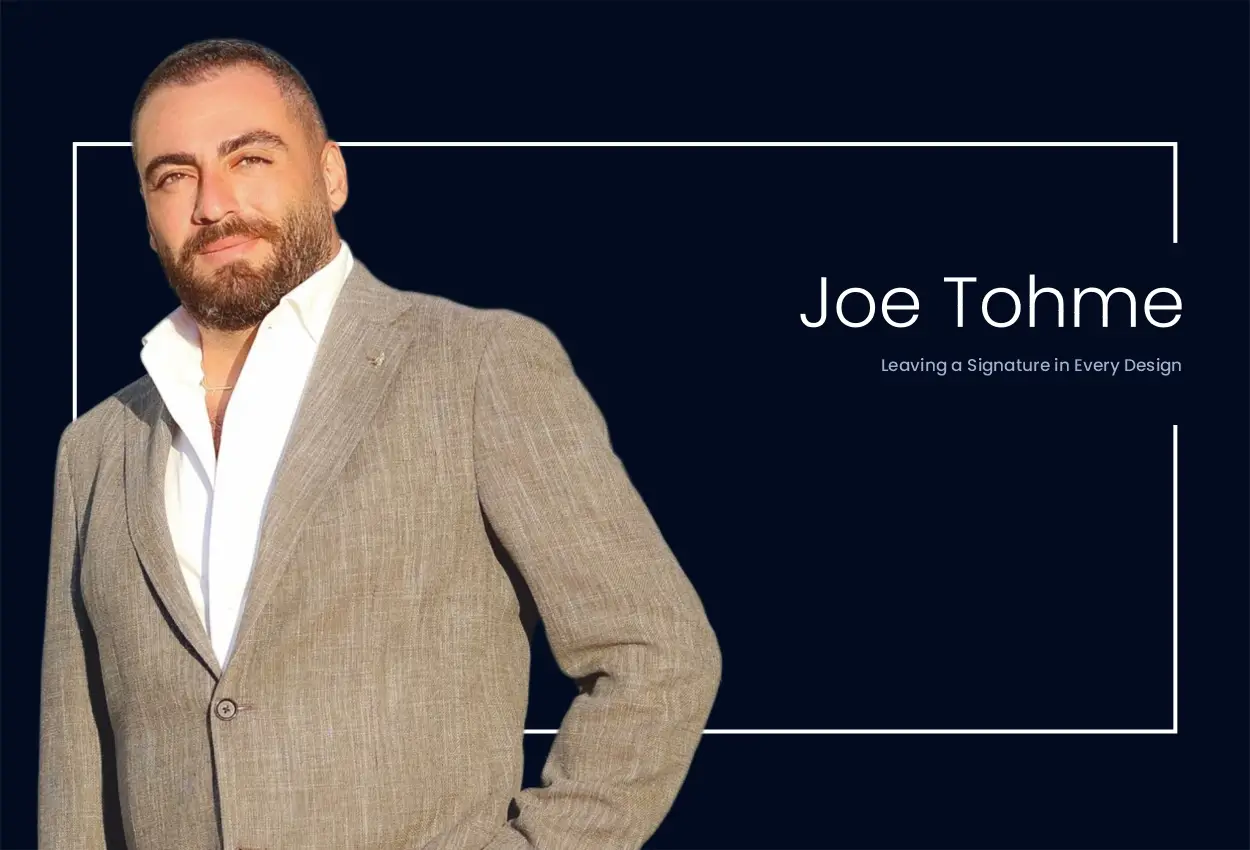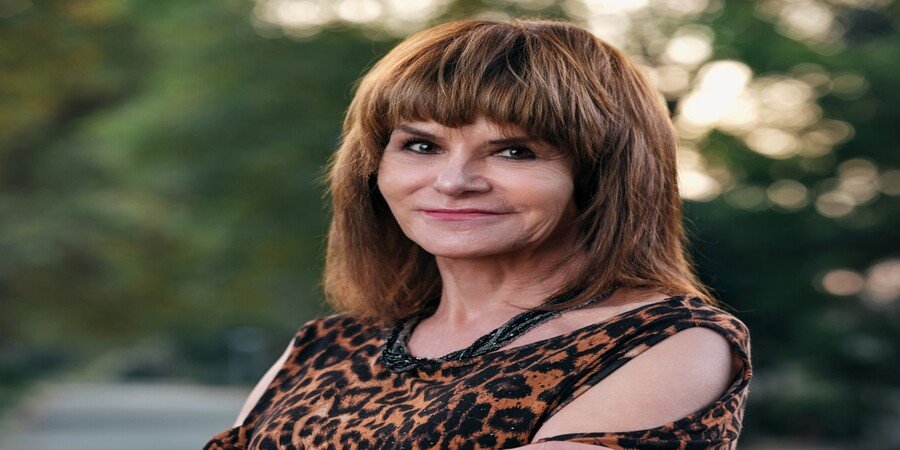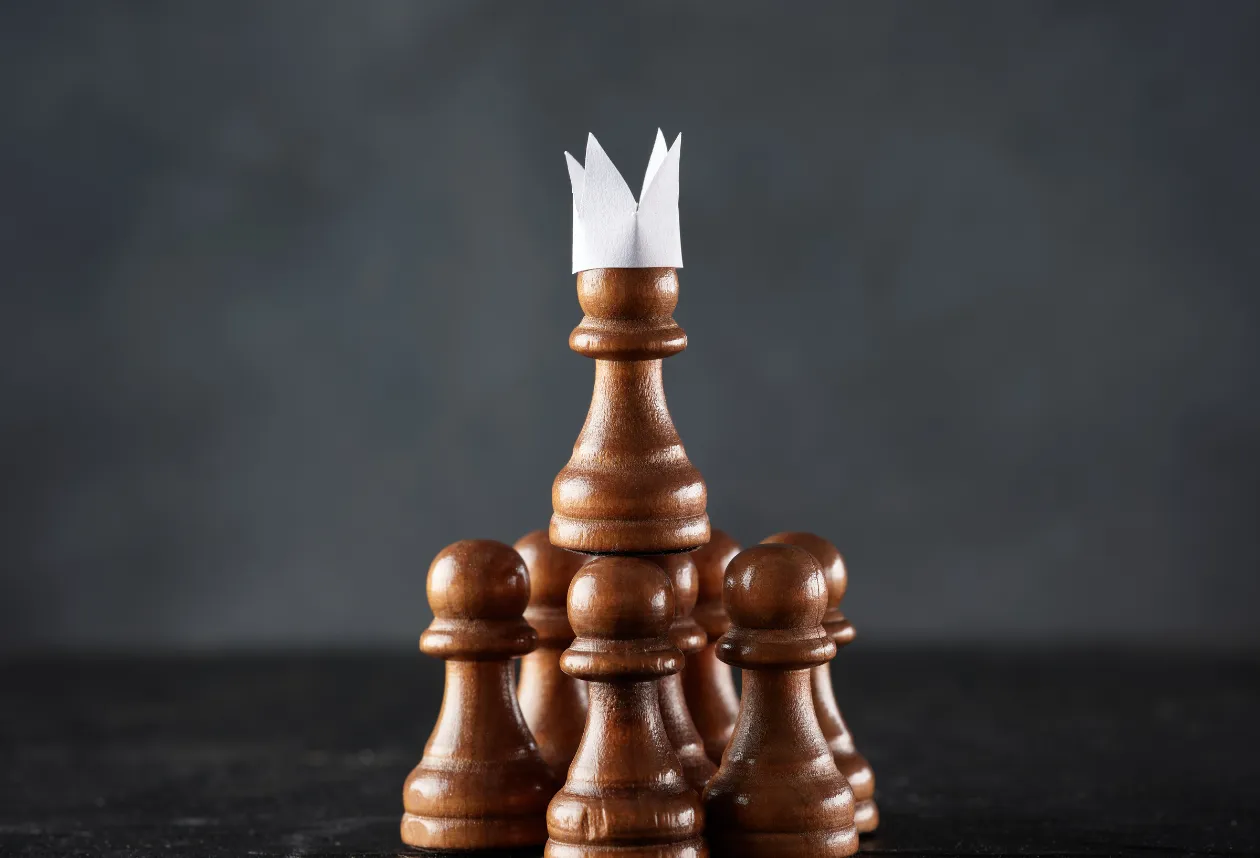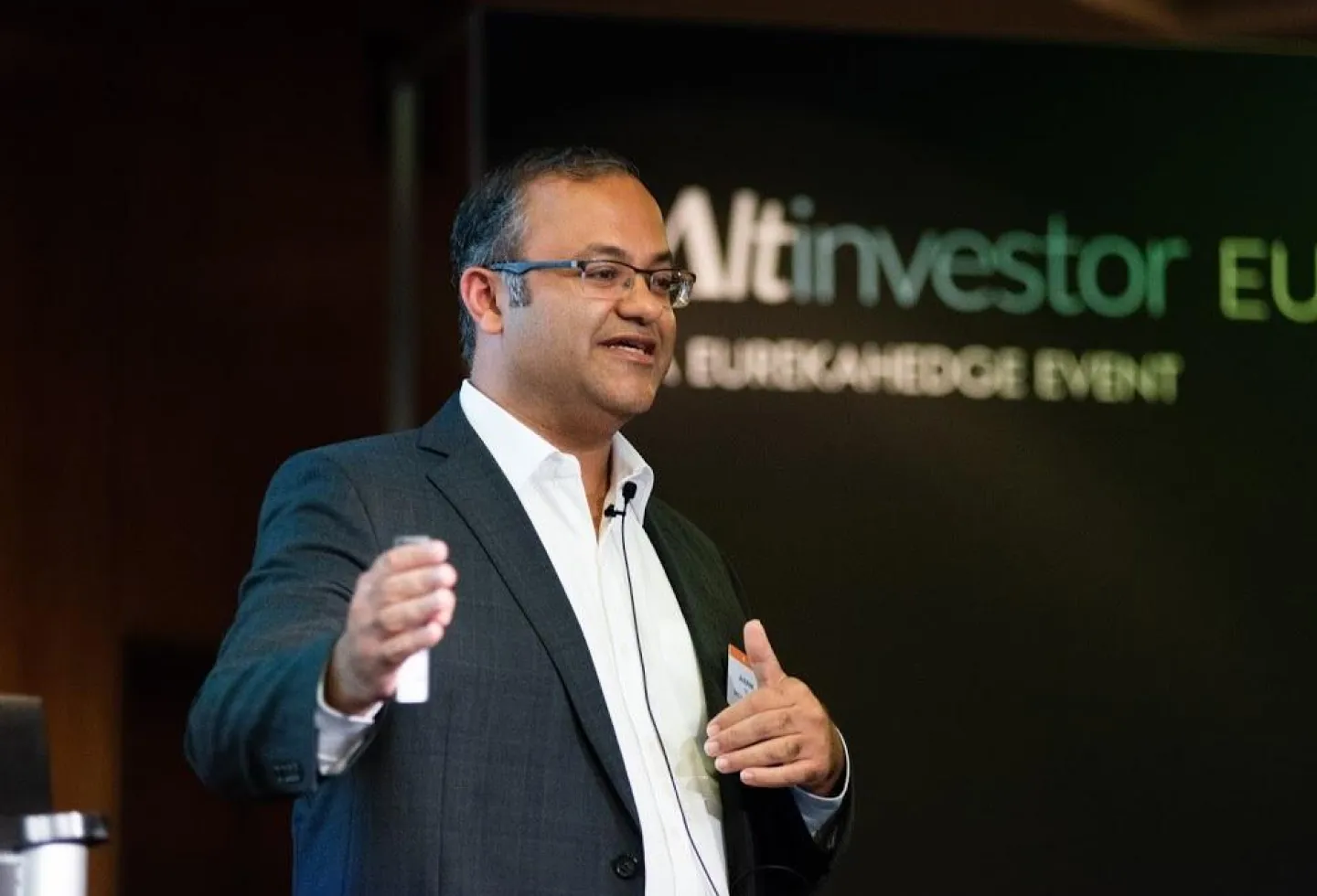Every space tells a story. From the quiet corners of a home to the bustling energy of an office, each environment carries a distinct essence that shapes the way people feel, interact, and remember it. Some spaces whisper serenity, inviting reflection and comfort. Others hum with purpose, inspiring focus and collaboration. The careful layering of light, texture, and form transforms mere structures into experiences that linger long after one has left. When a place is thoughtfully designed, it becomes more than walls and ceilings; it becomes a living expression of identity, a reflection of the people and ideas it houses.
Joe Tohme is a designer who understands that identity is at the heart of every space. His work goes beyond visual appeal to capture the very soul of a project, blending functionality with a distinctive sense of character.
Leaving an Imprint through Design
Joe has always been drawn to creativity and the desire to leave his mark on the world. His journey began as a junior designer, where he quickly fell in love with the field. While design fueled his passion, he also discovered a love for leadership. Guiding clients, leading teams, and shaping projects from concept to completion gave him a deeper sense of purpose.
That balance of creativity and management inspired him to start Stamp by Joe Tohme. In the early days, his vision was to simply create beautiful spaces. Over time, it evolved into something much greater. Today, Stamp is about designing meaningful and functional environments that carry his unique signature. What started as a personal passion has grown into a collaborative studio rooted in innovation and the belief that great design leaves a lasting impact. The name STAMP reflects exactly that a commitment to leaving an enduring imprint.
Lessons from the Build
A defining moment in Joe’s career came when he began working in a design and build company. Until then, design had been more of a creative exercise for him. Seeing how every line on a drawing translated into a real, tangible outcome completely reshaped his perspective. It forced him to think more deeply about details such as construction methods, material performance, and the user’s experience within a space.
One particular project, Zeila restaurant, left a powerful mark on him. Delivered on a very tight timeline, it taught him how design decisions directly influenced construction speed, costs, and ultimately the atmosphere for the people who would inhabit the space. From that point on, Joe understood that great design is not only about creating something beautiful. It must also be imaginative, practical, and grounded in real-world execution.
Finding Discipline and Depth
Joe’s previous organization introduced him to an entirely new scale of work. Managing several large projects at once and meeting strict deadlines taught him the importance of discipline. As he explains, designers often feel the urge to keep improving and refining, but there comes a point when the design must be finalized in order to move forward successfully.
This experience also broadened his understanding of office design. He discovered its complexity and the many layers beyond aesthetics. He learned about the impact of acoustics on productivity, the importance of circulation, the layering of spaces, and how even the smallest details can transform the identity of a company.
These lessons in discipline and depth continue to shape the way Joe leads and designs projects today. They remind him that while creativity is limitless, design excellence lies in knowing when to commit and how to create environments that balance beauty with purpose.
Finding the Essence
Joe believes that the essence of a project is never fixed; it evolves with the type of space and the people who inhabit it. In his view, an office must prioritize efficiency, flow, and collaboration. For F&B projects, the essence lies in brand identity and storytelling, while in residential work it is rooted in comfort, intimacy, and a genuine sense of home. Across all types, the client remains the guiding thread. Their aspirations shape what is essential, while Joe focuses on stripping away the unnecessary and emphasizing the core elements—whether functionality, identity, or comfort. For him, architecture becomes pure when it reflects its true purpose without excess.
Balancing the Trio
For Joe, the art of design lies in balancing aesthetics, functionality, and economy without ever compromising on quality. He emphasizes that many projects, regardless of scale, come with strict budgetary limits. These constraints, instead of being setbacks, serve as opportunities for smart, resourceful design. A prime example is a prominent law firm’s offices in KAFD. With limited resources, Joe was deliberate in material and finish selection, ensuring that the law firm’s reception conveyed strength and sophistication while other areas were simplified. By investing in the right details and creating focal points, the project achieved functionality, cost-efficiency, and a distinct identity.
The Power of Simplicity
Minimalism has often been a defining strength in Joe’s work, and the Oasis reception and typical villa project in Riyadh is a clear example. With a modest budget and a design direction centered on zen living, Joe and his team focused on fewer, carefully chosen elements. Each detail was refined, and every corner was designed to tell a story. By using natural finishes, calm lines, and balance, the team created a serene and timeless atmosphere. The simplicity not only met financial limitations but elevated the space, proving that minimalism can deliver powerful impact when handled with precision and intention.
Cultivating Creativity and Innovation
Joe takes the cultivation of creativity and innovation within his team very seriously. He believes exposure is key, which is why he consistently encourages his team to attend design weeks, seminars, and exhibitions with him. These experiences allow the team to discover new materials, stay attuned to emerging trends, and draw inspiration from the broader design world beyond their own projects. Inside the studio, Joe ensures that learning remains a constant. The team regularly holds internal sessions where they review recent projects from around the globe, not simply to admire them but to break down the thinking behind them. They analyze why certain ideas work, how they were executed, and what lessons can be applied to their own practice. This process of exposure, reflection, and exchange creates a culture where creativity and innovation are constantly nurtured.
Overcoming Leadership Challenges
As Managing Director, Joe has faced several challenges, the most significant being that he did not come from a managerial background. Everything he learned about leadership started from his own early experiences of being managed. By observing what worked, avoiding mistakes he witnessed, and shaping his own methods, he gradually developed a leadership style that was authentic to him. Along the way, he also enrolled in courses to strengthen his managerial skills and add structure to his approach. Another challenge he encountered was managing part of the team remotely. Building trust, ensuring clear communication, and guaranteeing that ideas were understood and translated effectively into design was not always easy in the absence of physical presence. Through consistency, transparency, and regular check-ins, he learned to overcome these hurdles. Finally, being relatively young in his role presented its own difficulties. Not everyone readily accepted his position, but through perseverance and consistently delivering high-quality work and results, Joe was able to prove himself and earn the respect that comes with leadership.
Designing Across Cultures
With projects spanning Riyadh, Dubai, and Lebanon, Joe has developed a strong sensitivity to cultural and architectural contexts. Having worked in the GCC for the past eight years, he has become attuned to the nuances of each region and the expectations that come with them. In Riyadh, projects often emphasize privacy, grandeur, and the balance between tradition and modernity. In Dubai, clients typically expect bold statements, luxury, and innovation. In Lebanon, there is a cultural inclination to celebrate heritage, craftsmanship, and layered detail. Rather than applying a one-size-fits-all formula, Joe adapts his design approach to suit each location’s unique identity while still maintaining his own design philosophy. By listening attentively to client needs, respecting traditions, and integrating his distinct design language, he ensures that each project feels authentic to its cultural context yet unmistakably carries the signature “stamp” of his studio.
Balancing Client Satisfaction with Design Philosophy
For Joe, ensuring client satisfaction always begins with listening. He believes clients must feel that their vision is fully understood. At the same time, he recognizes that clients approach him for his distinct design philosophy, and he takes care to strike a balance between their aspirations and his principles of simplicity, timelessness, and essence. Joe involves clients in the design process step by step, clearly explaining his decisions and demonstrating how his philosophy supports their goals. This transparent and inclusive approach allows clients to feel both heard and engaged, while also ensuring that each project remains aligned with his creative identity.
The Future of Design in the Region
Looking ahead, Joe sees three key forces shaping the future of architecture and interiors in the Middle East: sustainability, technology, and wellbeing. He notes that clients are becoming increasingly conscious of energy efficiency and durable materials, marking sustainability as a priority. Technology, already prevalent through smart homes and automated offices, is expected to expand further, transforming the way spaces function. Equally important is the focus on wellbeing, where elements such as natural light, acoustics, greenery, and overall comfort will continue to influence design decisions. Joe also emphasizes that the region has an opportunity to establish its own unique design identity by blending modern innovation with cultural storytelling, creating a distinctive voice on the global stage.
A Vision for Stamp by Joe Tohme
Joe’s long-term vision for Stamp by Joe Tohme is to expand it into a multidisciplinary creative studio that goes beyond architecture and interiors. Over the next five to ten years, he envisions branching into product design, jewelry, and even fashion, guided by the belief that design is more than buildings, it is a lifestyle and an identity. His ambition also includes international expansion, with plans to explore opportunities in Europe and beyond while maintaining a strong foundation in Riyadh and Dubai. Despite this diversification, the studio’s core philosophy of simplicity, timelessness, and essence will remain unchanged. For Joe, growth is not merely about size; it is about influence, positioning Stamp as a name synonymous with quality, authenticity, and innovation across multiple creative fields. His vision is for the brand to become a symbol of design excellence, leaving an imprint across sectors and geographies.
Read Also: Top Most Influential Architect Driving Change in 2025



